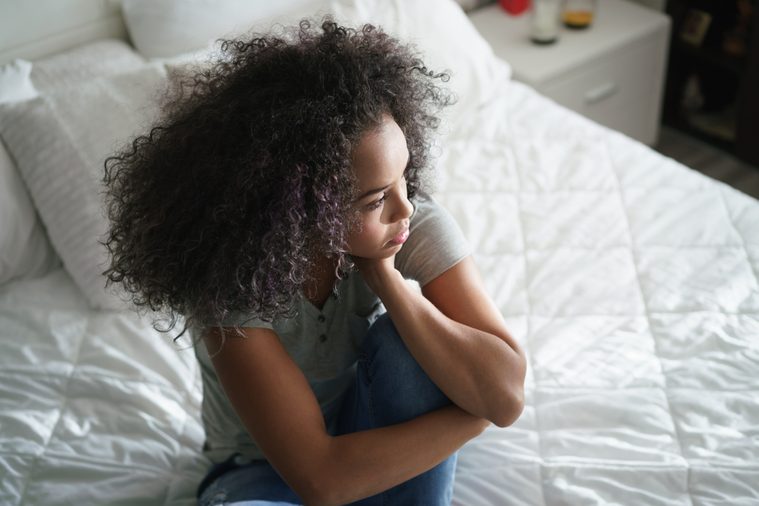
Clinical depression
When you can’t seem to get out of bed, you take little pleasure in the company of others, and the joyous events in life leave you feeling empty—or, worse, irritable—you could be dealing with clinical depression, one of the most common types of depression, according to the National Institute of Mental Health (NIMH). In fact, it’s so common that it’s the most prevalent mental health issue in the United States.
The NIMH experts say that no two people have the same symptoms, but the signs also include feelings of hopelessness, a loss of interest in hobbies, difficulty concentrating, appetite or weight changes, persistent aches and pains with no clear cause, and suicidal thoughts. Because there are many effective depression treatments, people experiencing any of these symptoms should seek help immediately, experts say. Find out what psychologists wish you knew about different types of depression.

Atypical depression
With this kind, happy events can lift the gloom—but depression soon returns. “What makes depression ‘atypical’ is that a person’s mood improves in response to positive or affirming events,” says Paul Hokemeyer, PhD, an internationally renowned clinical and consulting psychotherapist. Among the various types of depression, this is the most common subtype, and it turns up in women more than in men, says Susan Fletcher, PhD, a psychologist and author who practices in Frisco, Texas. “You may even have more good days than bad,” she says.
Some people might dismiss the disorder as tiredness or boredom; other symptoms include increased appetite or weight gain, oversensitivity to rejection, sleeping too much, and feeling that your arms or legs are too heavy. You may have trouble doing day-to-day activities and may feel as if life isn’t worth living at times. People who have this depression will experience symptoms about 50 percent of the time, says Cara Gardenswartz, PhD, a clinical psychologist and professor in Beverly Hills, California. Treatment includes medication, therapy, and lifestyle changes. Learn about 8 hidden signs of different types of depression.
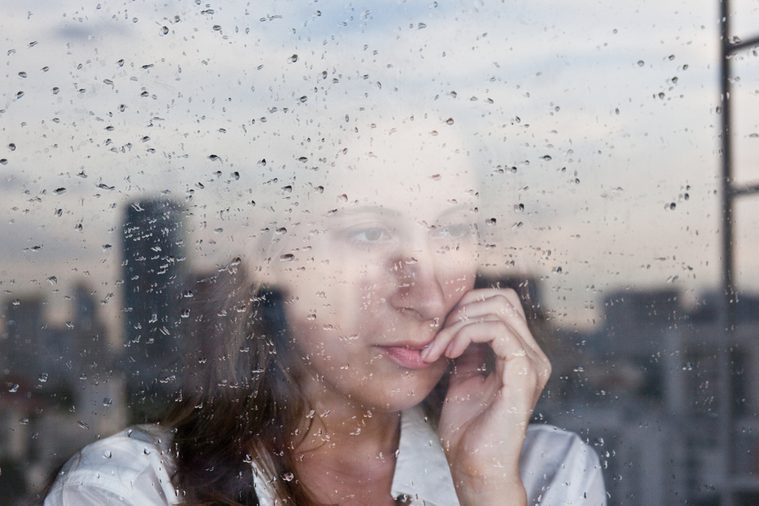
Seasonal affective disorder (SAD)
As the name suggests, seasonal affective disorder (SAD) kicks in during certain seasons—usually winter. The low mood can lift once spring and longer days kick in. According to the American Academy of Family Physicians, about 4 to 6 percent of people suffer from a severe version of this depression. Another 10 to 20 percent experience a milder form of SAD. To reach a diagnosis, doctors need to establish that patients have suffered SAD for at least two years in a row.
As is true with most other types of depression, women are at higher risk—they are four times as likely as men to suffer from this type of depression. It typically hits people in their 20s—the risk decreases as you get older. Some people find that they sleep more and crave high-carb comfort foods. “Change your habits to decrease the progression of symptoms,” says Fletcher. He recommends keeping the house brighter during the day, playing upbeat music, and considering light-box therapy. What’s that? “The patient sits under an electric light that mimics the frequency of the sun’s natural rays,” says Hokemeyer. He adds that exercise—even mild exercise such as walking—helps. “By getting up and moving, our bodies produce dopamine, a neurotransmitter that helps lift depression,” he says. Check out these 16 science-backed natural ways to overcome depression.

Bipolar disorder
Sometimes called manic depression, this is a mental illness characterized by extreme mood swings. “You have two very different mood peaks,” says Hokemeyer. “One very high and the other very low.” Unlike other types of depression, bipolar disorder hits men and women equally. About 2.6 percent of the U.S. population is diagnosed with bipolar disorder; nearly 83 percent of these cases fall into the severe category, according to the NIMH. “With treatment, it can be controlled,” says Fletcher. “The problem is that someone with this disorder may not recognize when he is manic.”
People with bipolar disorder need to have a support system to help them recognize when they’re disruptive. Medication works well for many people to help stabilize their mood. But it’s not the only way to go. “Therapy can help identify external and internal triggers, like lack of sleep,” says clinical psychologist Margaret Rutherford, PhD, an author and podcaster based in Fayetteville, Arkansas. “Working on skills to help with impulse control and mood management is important.”
Other therapists agree. “I know a number of people who have successfully managed their bipolar disorder without medication, for example by dramatically reducing the stressors in their lives,” says Joel A. Dvoskin, PhD, a psychologist at the University of Arizona College of Medicine. Check out these 8 symptoms of bipolar disorder you might be ignoring.
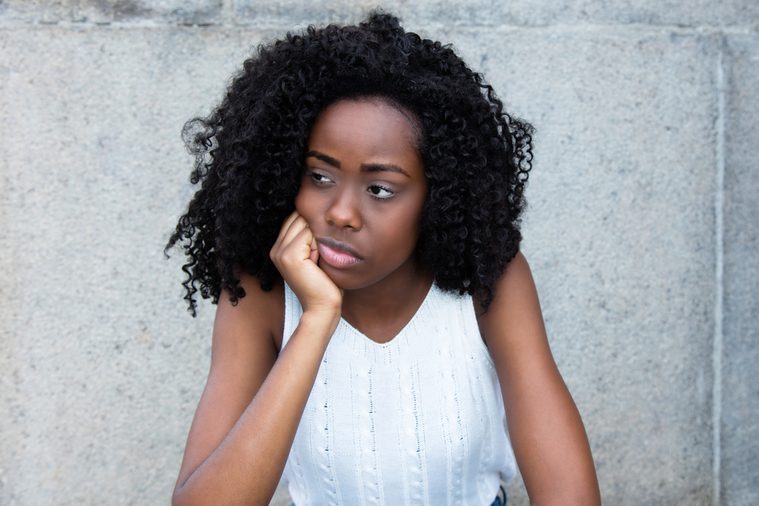
Persistent depressive disorder (PDD)
About 2 percent of the American population has persistent depressive disorder (PDD), also known as dysthymia or chronic depression. Here, you have a fairly consistent low mood that lasts for two or more years. “You have a diminished ‘life force,'” says Hokemeyer. “You feel like you’re living under a cold and wet blanket. Everything takes more effort than it should.”
You’re in a bad mood about 50 percent of the time or more, according to Gardenswartz. You might not always notice when it’s becoming a problem, but others do. “Many people with it aren’t even aware they’re depressed because they may not feel sad,” says Rudy Nydegger, PhD, a professor emeritus of management and psychology at Union Graduate College and Union College. “They’re just never in a very good mood.” You might be more irritable and more withdrawn. You’re sad, have difficulty concentrating, and are fatigued, according to Gardenswartz.
While PDD can indicate the approach of major depression, not everyone gets worse, says Fletcher, especially if they seek treatment. “I can’t stress the importance of exercise and good nutrition for all these forms of depression,” says Rutherford. “Therapy and meds aren’t always enough.” Read up on these 12 ways to help someone with depression.
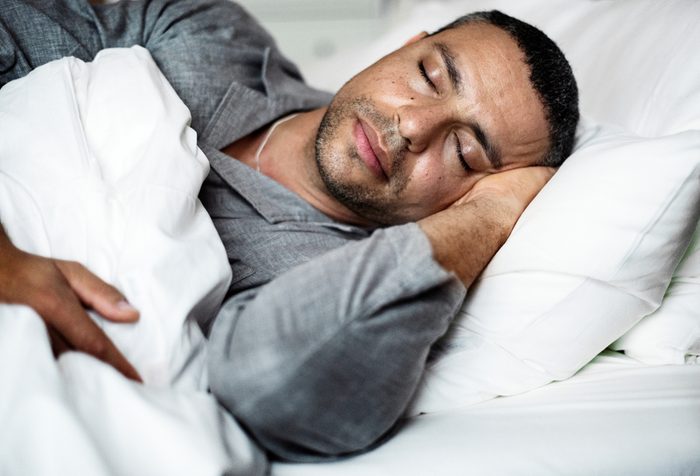
Major depression
This is also known as major depressive disorder; about 16.2 million adults in the United States have experienced at least one major depressive episode, according to the NIMH. Symptoms include depressed mood and energy, loss of appetite or overeating, unexplained aches and pains, and difficulty sleeping (or sleeping too much). These symptoms happen every day for most of the day, lasting weeks or months. Avoid these 9 everyday habits that could raise your risk of depression.
“Another hallmark is that you have more bad days than good,” says Fletcher. Patients tend to respond to talk therapy and medication; in extreme cases, some psychiatrists recommend electroconvulsive therapy (ECT). This involves a brief electrical stimulation of the brain while the patient is under anesthesia. An estimated 80 to 90 percent of people with major depression will feel better with treatment, according to the American Psychiatric Association.
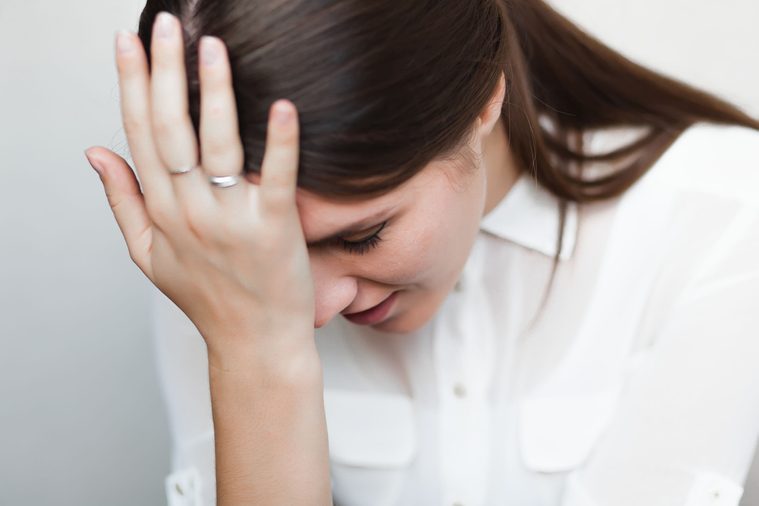
Situational depression
This type of depression, which therapists also refer to as adjustment disorder, results from difficult life events like a serious illness, divorce, child custody issues, the death of a loved one, unemployment, financial difficulties, and being in an abusive relationship. You’re experiencing significant stress emotionally and physically, says Deborah Serani, PhD, a psychologist in New York, a senior professor at Adelphi University, and author of Living with Depression: Why Biology and Biography Matter Along the Path to Hope and Healing. Seeking help early on will help prevent situational depression from becoming something more serious, she says.
“It’s a combination of severity and duration that help us decide when grief or sadness has become depression,” says Dvoskin. Symptoms may include anxiety, difficulty sleeping, aches and pains, sadness, hopelessness, crying, and appetite changes. “It can be as severe as other types of depression,” says Gardenswartz. “When the world expects you to snap out of it, that can lead to you feeling more symptoms, including shame and guilt.” Patients rarely require medication, though, says Fletcher; it tends to resolve in the six months following the event. “If symptoms linger more than six months, it’s likely they’ve progressed to another form,” she says. Short-term psychotherapy is often effective, says Dvoskin. Find out how to tell the difference between depression and anxiety.
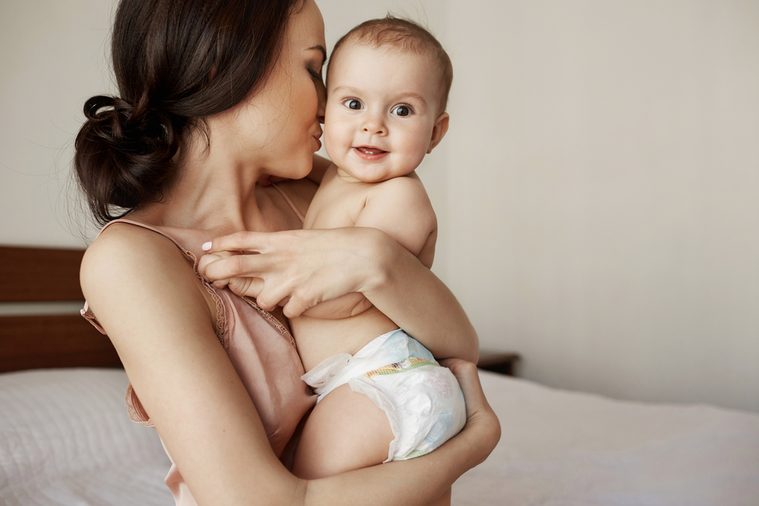
Postpartum depression
Many new moms will go through some baby blues following childbirth—mood swings, crying spells, anxiety, and difficulty sleeping. But up to one in seven moms will develop actual depression, according to the American Psychological Association. “There can be mild forms of postpartum depression and [forms that are] much more severe,” says Rutherford. It’s characterized by anxiety, fatigue, loneliness, extreme sadness, hopelessness, and feelings of being disconnected from the child. “Issues of bonding and attachment between the baby and the mother are at risk if postpartum depression is left untreated,” says Serani. As with certain other types of depression, treatment may include a combination of therapy and medications.
“Mothers need to accept that they’re experiencing a physiological condition and not a moral failing,” says Hokemeyer. “They need to be able to talk openly about what they’re going through with at least one nonjudgmental, empathetic, and compassionate friend or family member.” These new moms also need to take care of themselves, like squeezing in more naps. Be assertive about your needs, says Nydegger; don’t neglect the fun aspects of your own life, like socializing. “Expect—and ask for—help from others.” Know the 10 silent signs you need depression medication.
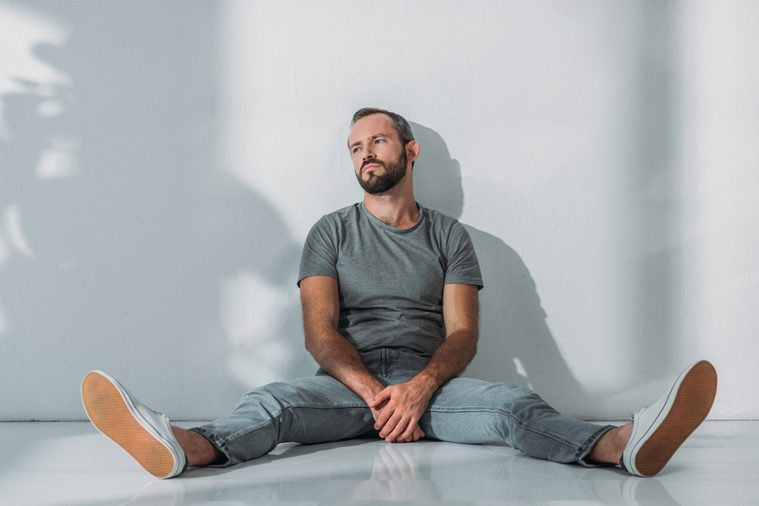
Depression with psychotic features
Depression with psychotic features is a severe form of major depression. Sometimes people with severe major depression will lose touch with reality; their psychosis could include delusions—a belief that is false or doesn’t make sense—and hallucinations: seeing, hearing, smelling, tasting, or feeling things that aren’t really there. Patients often respond to a combination of antipsychotics, antidepressants, and psychotherapy. Never, ever say these 14 things to someone suffering from depression.
This article has been medically reviewed by Paul Hokemeyer, PhD, an internationally renowned clinical and consulting psychotherapist.